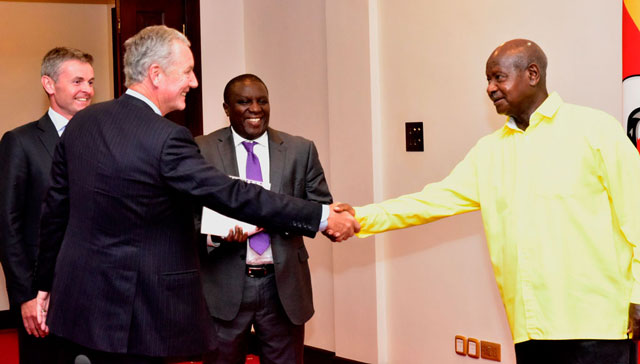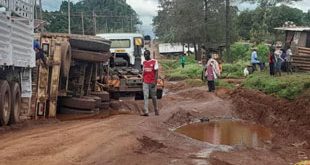
Timeline of Tullow Oil Plc in Uganda
2004: Tullow Oil Plc buys Energy Africa and takes over 50% stake in Exploration Areas 2 and Exploration Area 3.
2005: In a monumental exploration breakthrough, Australian firm, Hardman Resources, drills the Mputa-1 well and finds significant quantities of oil and gas in Exploration Area 2 situated in the northern area of Lake Albert.
January 2006: Multiple oil discoveries are confirmed by exploration firms Hardman Resources and Tullow Oil. In Exploration Area 2, Hardman Resources drills an exploration well (Waraga-1) which hits oil and gas while Tullow’s Mputa-2 well and Nzizi-1 also find oil. In Exploration Area-3, Heritage’s Kingfisher-1 well also hits oil and gas.
07 Oct.2006: Following confirmation of major oil discoveries in the country by Heritage and Tullow, President Museveni convenes a thanks giving ceremony for the discovery of oil.
November 2006: Tullow Oil and the Government of Uganda sign a memorandum of understanding to produce oil for the local market (Early Production Scheme).
January 2007: Tullow buys Hardman Resources, a development which gives Tullow a 100% stake in Exploration Area-2 together with a 50% stake through its earlier acquisition of Energy Africa, in Exploration Area-3 situated along the southern tip of Lake Albert.
2008: During the year, Tullow drills five exploration wells in Exploration Area-2 (northern Lake Albert region) finding oil and gas in all of them. Heritage is also successful in its Exploration Area-1 where all of its four wells register substantial amounts of oil and gas.
July 2008: The National Environment Management Authority holds a public hearing for the proposed Early Production Scheme (EPS) in Kaiso Tonya, an environmentally sensitive area in the Albertine region.
April 2009: Tullow pushes its Early Production Scheme (EPS) to 2010 following the discovery of more oil and gas in the country. The EPS was supposed to produce 4,000-5,000 barrels of oil of oil from the Mputa oil wells to generate thermal power.
16 Sept. 2009: Tullow’s Angus McCoss announces the firm’s largest oil discovery in Uganda at Ngassa in Block 2 which is near the shores of Lake Albert. The discovery takes Uganda’s oil inventory above the 700 million barrel mark.
December 2009: Heritage Oil offers its 50% stake in Exploration Areas 1 and 3A to Italian oil giants ENI for a consideration of US$ 1.45bn. Weeks later, Tullow asserts its pre-emptive rights to buy the Heritage stake on the same terms and conditions that Heritage has agreed with ENI.
26 July 2010: Heritage Oil sells its exploration licenses (Blocks 1 and 3A) in the Albertine Graben to Tullow Oil for US$ 1.45bn making the British firm the sole licensee exploring for oil in Uganda. The Government of Uganda immediately slaps a Capital Gains Tax of US$434 million on the Heritage-Tullow transaction. Heritage protests URA’s computation of the tax.
11 Oct. 2011: After a tempestuous two-day special sitting of parliament, in which MP Gerald Karuhanga (Youth MP-Western Uganda) accuses Prime Minister Amama Mbabazi, Foreign Affairs Minister Sam Kutesa and Internal Affairs Minister Hilary Onek of taking bribes to influence the award of oil exploration contracts, members pass a resolution calling on the three ministers to resign.
03 Feb.2012: Tullow signs two production sharing agreements with the government in what is seen as a green light for the company’s farm-down deal with China’s CNOOC and France’s Total. The agreements cover the 3,000 sq km Exploration Area 1 in the Pakwach Basin and the 170 km2 Kanywataba Prospect in Ntoroko District.
 The Independent Uganda: You get the Truth we Pay the Price
The Independent Uganda: You get the Truth we Pay the Price


